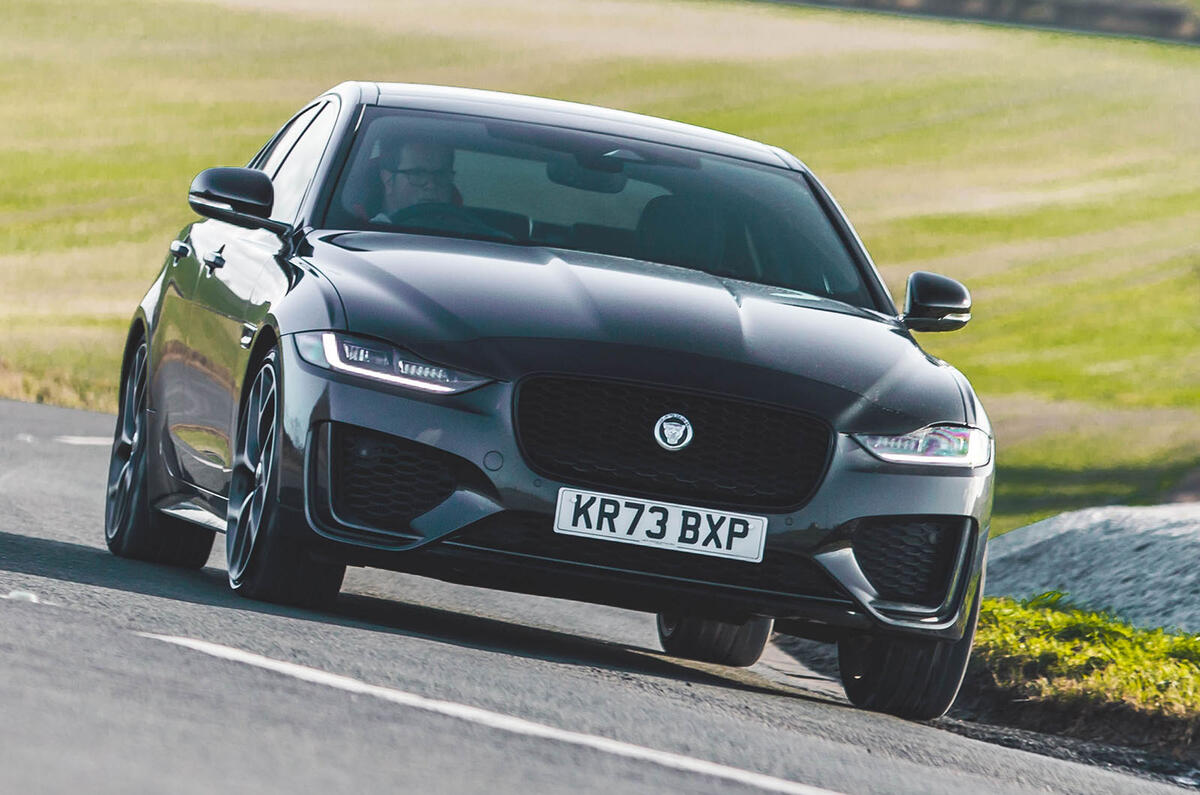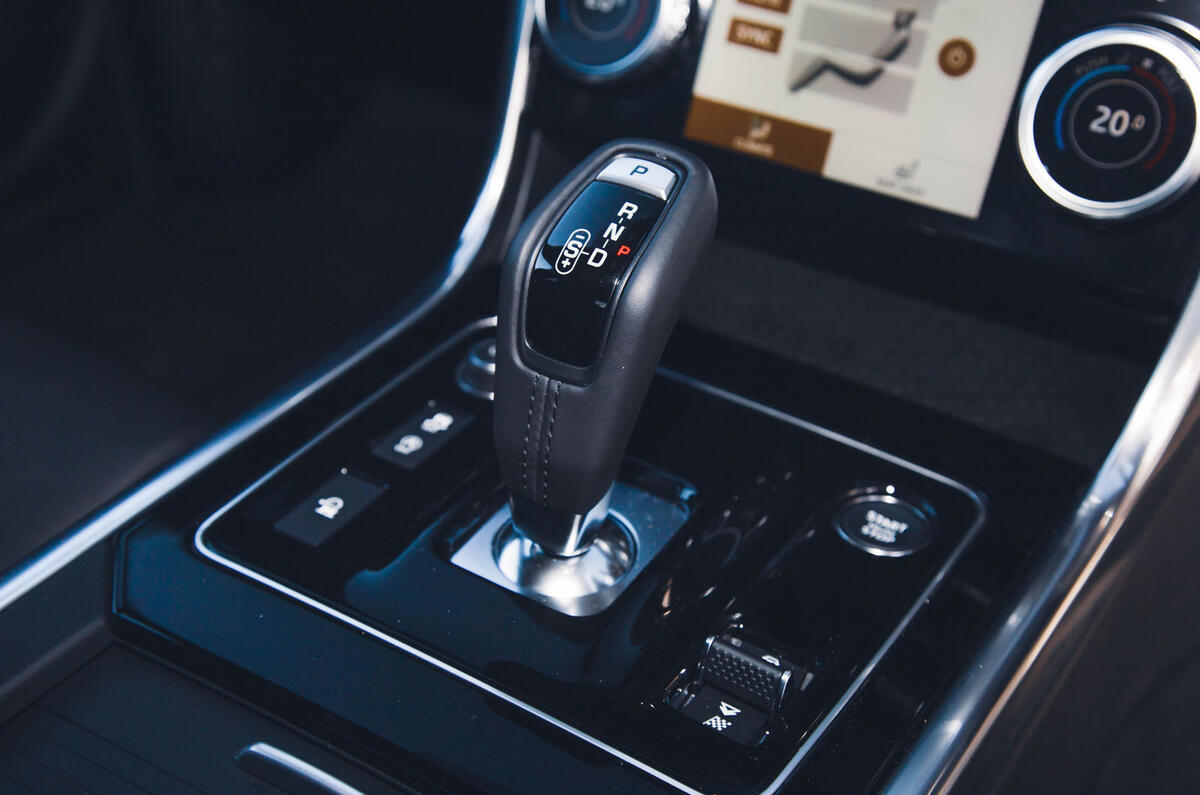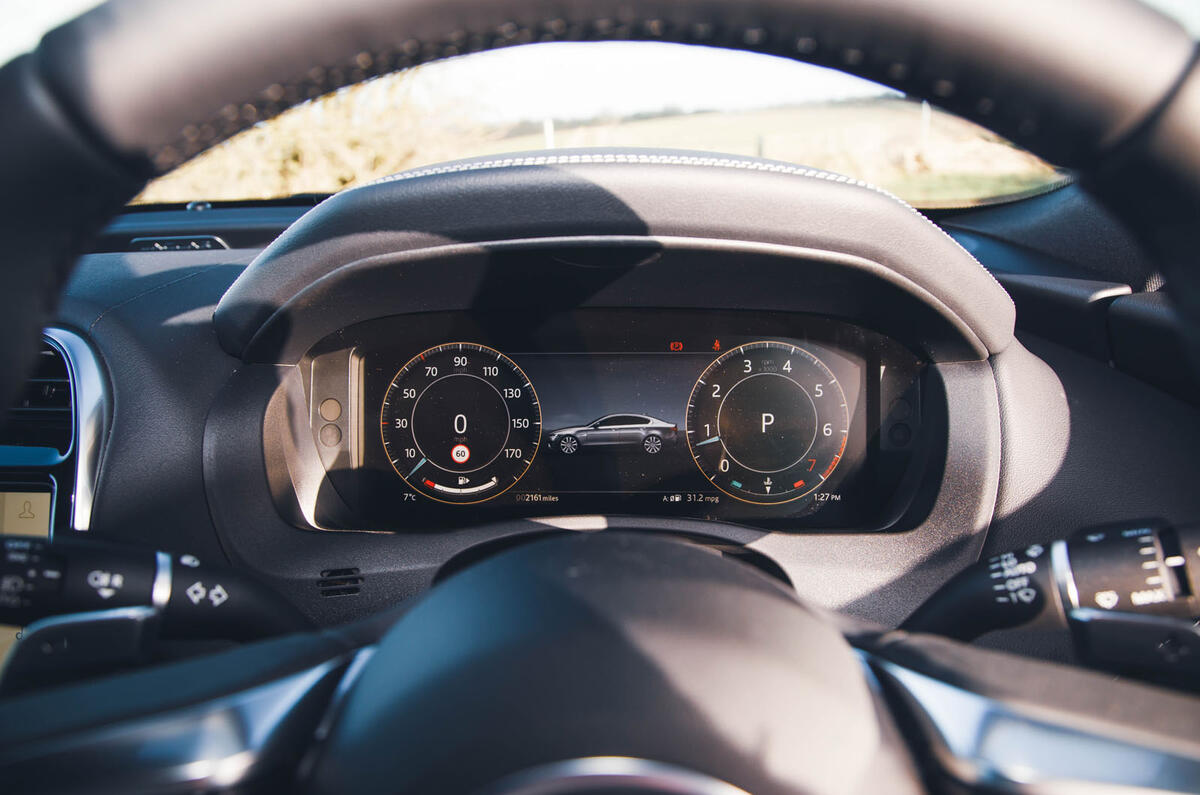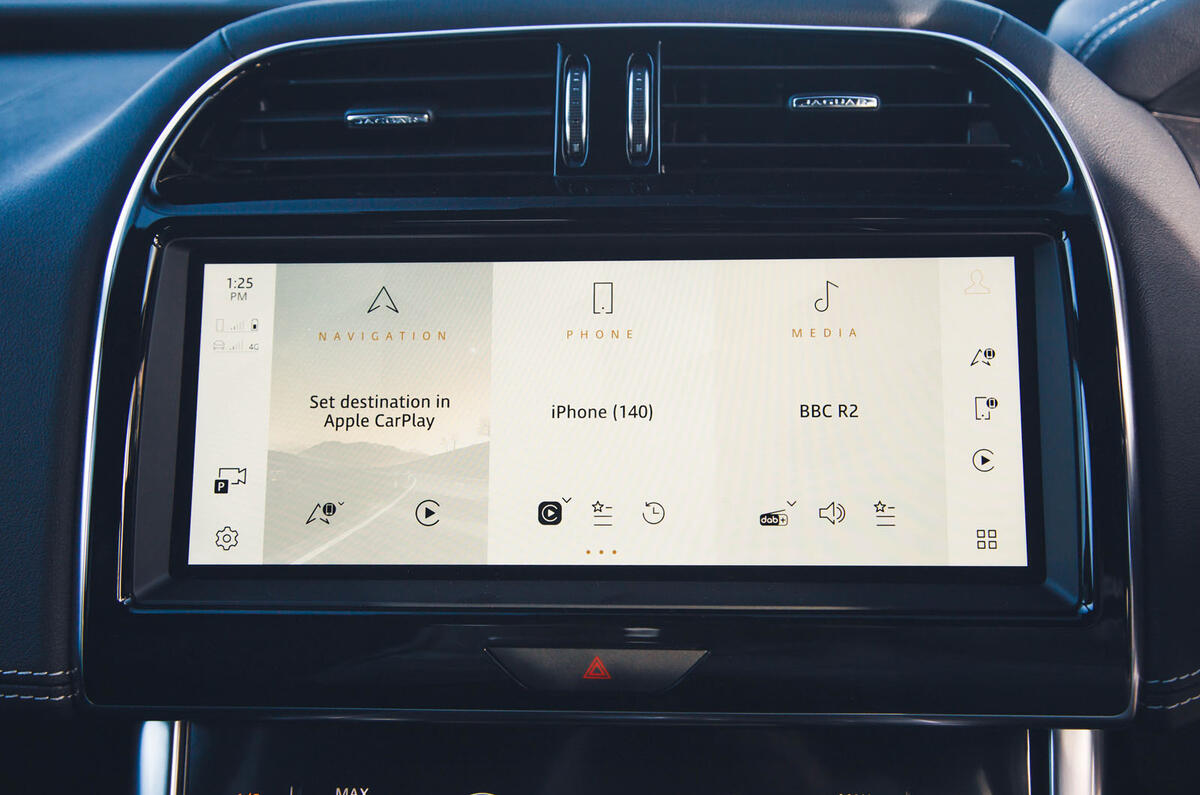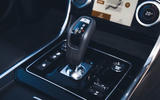The XE’s line-up of four-cylinder Ingenium engines certainly don’t give it the lusty, enticing mechanical charm that Jaguar’s traditional big saloons of so many decades ago had, but they do deliver reasonably refined, flexible and economical motoring in the case of the diesels, and a that bit more urgency if you opt for the range-topping petrol.
Our P300 AWD Sport test car came with a claimed 0-62mph of 5.9sec and, in dry test conditions, fell narrowly but notably short of reproducing that on the track (0-60mph: 6.3sec). Using a more traditional torque-converter automatic gearbox than at least some of its transverse-engined rivals, it doesn’t have a launch control mode and so - four-wheel drive or not - it doesn’t get off the line quite as smartly as it might.
It’s inconvenient for Jaguar that the same excuse can’t be used for roll-on acceleration. From 30mph to 70mph through the gears, the XE needed 5.7sec (4.2sec for the Audi S3 Sportback in 2020). Kerb weight may be part of the problem here, the XE being a deal heavier than so many compact premium options despite its aluminium construction. But the other unmissable fact is that the car’s range-topping petrol engine never really quite feels like it’s making all of its advertised 296bhp.
There’s a slightly gravelly character to the 2.0-litre turbocharged unit that makes for less of an audible contrast with the once-saloon-default four-pot diesel than you might expect. Jaguar’s particular combustion control technology makes this less smooth than some petrol engines, while it’s also a little less free-revving than some harder-working turbo petrol alternatives - although turbo response is generally quite good, and mid-range torque ample also.
The eight-speed ZF automatic gearbox shifts smoothly in normal use, but like the engine, it doesn’t seem to appreciate being hurried into service or worked hard. It’s a little slow to engage drive at times, is likewise a bit slow to change ratios in paddle-shift manual mode, and somehow combines with the engine to give the XE’s performance a slightly treacly feel, as if there were simply more driveline friction than the norm for the car to overcome.
However, most of this would only be any obstacle or disappointment for those who might be attracted to the XE as some junior executive sport saloon. During normal day-to-day driving, the P300 powertrain works agreeably well, albeit perhaps with the odd vaguely frustrating moment of gelatinous latency (although, as well come on to later, it isn’t the most fuel efficient petrol engine of its kind).The car’s controls are carefully and progressively tuned, making the brake pedal progressive in its feel, while the XE’s brakes themselves (in uprated form, as tested) are fairly powerful and resist fade well.
The XE’s diesel engines, meanwhile, have proven impressively refined and real-world economical on recent acquaintance. While they may no longer make financially viable options for most fleet car drivers in 2024, they should still be well worth considering for private buyers with higher mileage in mind.



